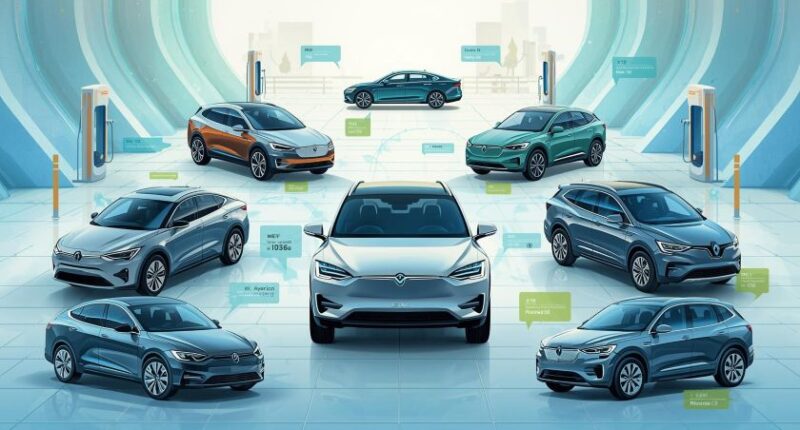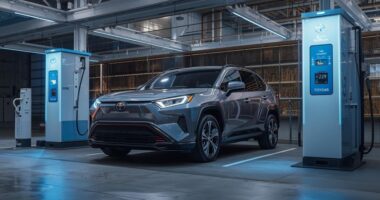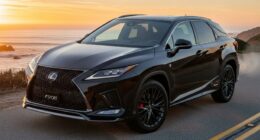Introduction — The Rise of the Electric Revolution
The automotive world is rapidly shifting toward electric power. Whether you’re looking to reduce your carbon footprint, save money on fuel, or embrace cutting-edge technology, electric vehicles (EVs) are no longer a niche choice — they’re the future of driving.
However, with dozens of models and varying technologies on the market, choosing your next electric vehicle can be challenging. This comprehensive guide breaks down every factor you should consider — from battery range and charging infrastructure to total cost of ownership and lifestyle compatibility.
Step 1 — Understand Your Driving Needs
Evaluate Your Daily Commute
Start by analyzing how and where you drive. If your daily commute is under 50 miles, even a compact EV with a modest range (150–200 miles) can serve you perfectly. For longer commutes or frequent highway trips, look for EVs offering 300 miles or more on a single charge.
Tip: Check your actual mileage using your smartphone or car’s trip meter for a week — you’ll likely drive less than you think.
City vs. Highway Driving
-
City drivers: Stop-and-go traffic works in your favor since regenerative braking recovers energy. Smaller EVs like the Nissan Leaf or Chevy Bolt are perfect.
-
Highway drivers: Long-range models such as the Tesla Model Y, Hyundai Ioniq 6, or Ford Mustang Mach-E handle high-speed efficiency better.
Step 2 — Choose the Right Battery Range
Know What “Range Anxiety” Really Means
Range anxiety — the fear of running out of battery — is a major concern for new EV buyers. In 2025, most EVs offer 200–400 miles of range, which covers 95% of daily driving needs.
Still, think about your worst-case scenario — like long trips, cold weather, or carrying extra passengers — as these factors can reduce range by 10–30%.
Match Range to Lifestyle
-
Urban lifestyle: 150–250 miles is usually enough.
-
Suburban or mixed driving: 250–350 miles for flexibility.
-
Frequent travelers: 350+ miles ensures comfort on longer drives.
Pro Tip: Don’t overpay for range you won’t use often. Instead, invest in faster charging or a home charger.
Step 3 — Understand Charging Options
Home Charging
Home charging is the most convenient option. Installing a Level 2 charger (240V) lets you fully charge most EVs overnight (6–10 hours).
Check if your home’s electrical panel can handle the load and whether your utility company offers EV-specific electricity rates for cheaper overnight charging.
Public and Fast Charging
If you travel frequently or live in an apartment, access to DC Fast Chargers is essential. These can recharge most EVs to 80% in 20–30 minutes.
Look for EVs compatible with the NACS (Tesla) connector, which is quickly becoming the new North American standard adopted by GM, Ford, and Hyundai.
Charging Network Compatibility
Some automakers offer free or discounted charging at specific networks (like Electrify America or Tesla Supercharger). Compare these perks — they can save hundreds annually.
Step 4 — Consider Total Cost of Ownership
Beyond the Sticker Price
While EVs may have higher upfront costs, they usually offer lower long-term expenses due to fewer moving parts, reduced maintenance, and cheaper “fuel” (electricity vs. gas).
Break down your costs into:
-
Purchase price or lease payment
-
Electricity cost per kWh
-
Maintenance & insurance
-
Tax credits and incentives
Federal and State Incentives
In the U.S., qualifying EVs can receive up to $7,500 in federal tax credits under the Clean Vehicle Credit (based on battery sourcing and assembly). Many states offer additional rebates or reduced registration fees.
Visit fueleconomy.gov to see which models qualify in 2025.
Step 5 — Evaluate Battery Technology & Performance
Lithium-Ion vs. LFP Batteries
Most EVs use lithium-ion batteries, offering excellent energy density and fast charging. However, LFP (lithium iron phosphate) batteries are gaining popularity for being more affordable and stable — ideal for city or commuter EVs.
-
Lithium-ion: Higher range, slightly more expensive.
-
LFP: More durable, safer, and often cheaper.
Charging Speed and Thermal Management
Not all EVs charge equally fast. Some 800V systems (like Hyundai’s E-GMP platform) can charge from 10–80% in under 20 minutes. Check the vehicle’s maximum DC charging rate (kW) to compare real-world charging times.
Efficient thermal management systems also preserve battery life in extreme weather.
Step 6 — Compare Vehicle Segments and Body Styles
Compact EVs
Ideal for city driving, easy parking, and budget-conscious buyers. Examples:
-
Nissan Leaf
-
Chevy Bolt EUV
-
Mini Cooper SE
Crossovers & SUVs
The most popular EV category, balancing space, comfort, and range. Examples:
-
Tesla Model Y
-
Hyundai Ioniq 5
-
Ford Mustang Mach-E
Sedans & Performance EVs
For those prioritizing driving dynamics and sleek looks. Examples:
-
Tesla Model 3
-
Polestar 2
-
Hyundai Ioniq 6
Trucks & Utility EVs
Perfect for towing or adventure seekers. Examples:
-
Ford F-150 Lightning
-
Rivian R1T
-
Chevrolet Silverado EV
Step 7 — Focus on Tech, Safety & Comfort
Infotainment & Connectivity
Modern EVs feature large touchscreens, voice controls, and connected apps for remote charging, preconditioning, and over-the-air (OTA) updates.
Check if the vehicle supports Android Auto / Apple CarPlay (some brands like GM are phasing these out in favor of native systems).
Driver-Assistance Features
Look for ADAS (Advanced Driver-Assistance Systems) such as:
-
Adaptive Cruise Control
-
Lane Keep Assist
-
Automatic Emergency Braking
-
Hands-free driving (GM Super Cruise, Ford BlueCruise, Tesla Autopilot)
Comfort & Interior Quality
Range and tech matter, but comfort determines daily satisfaction. Check seat ergonomics, materials, cargo space, and noise levels — especially since EVs are nearly silent.
Step 8 — Plan for the Future
Software Updates & Ecosystem Support
Many EVs improve over time through OTA updates. Brands like Tesla, Rivian, and Polestar lead here, while others are catching up.
Make sure your chosen EV’s brand has long-term software support — futureproofing your investment.
Resale Value & Battery Warranty
EV resale values vary by brand and technology maturity. Models from Tesla, Rivian, and Hyundai tend to hold value better.
Most EVs offer 8-year or 100,000-mile battery warranties, but check details carefully — some only cover specific degradation thresholds.
Step 9 — Test Drive Multiple Models
Never buy an EV without driving it first. A test drive helps you evaluate:
-
Throttle response and regenerative braking
-
Ride comfort and visibility
-
Infotainment usability
-
Real-world charging experience (some dealers have on-site chargers)
Bonus Tip: Test charging speed and compatibility if you can — it’s as important as the driving experience itself.
Step 10 — Make a Smart, Sustainable Choice
When you’ve narrowed your list, weigh your practical needs, financial goals, and environmental priorities. Don’t just buy for the brand or hype — focus on how well the EV fits your daily life.
Conclusion — Finding the Perfect Electric Vehicle for You
Choosing your next electric vehicle doesn’t have to be overwhelming. By assessing your driving habits, charging options, budget, and feature preferences, you can find an EV that’s efficient, fun, and future-ready.
As EV infrastructure grows and technology improves, making the switch to electric is not only practical but also rewarding. Whether it’s a compact commuter or a long-range family SUV, the right EV will redefine how you drive — quietly, cleanly, and confidently into the future.









